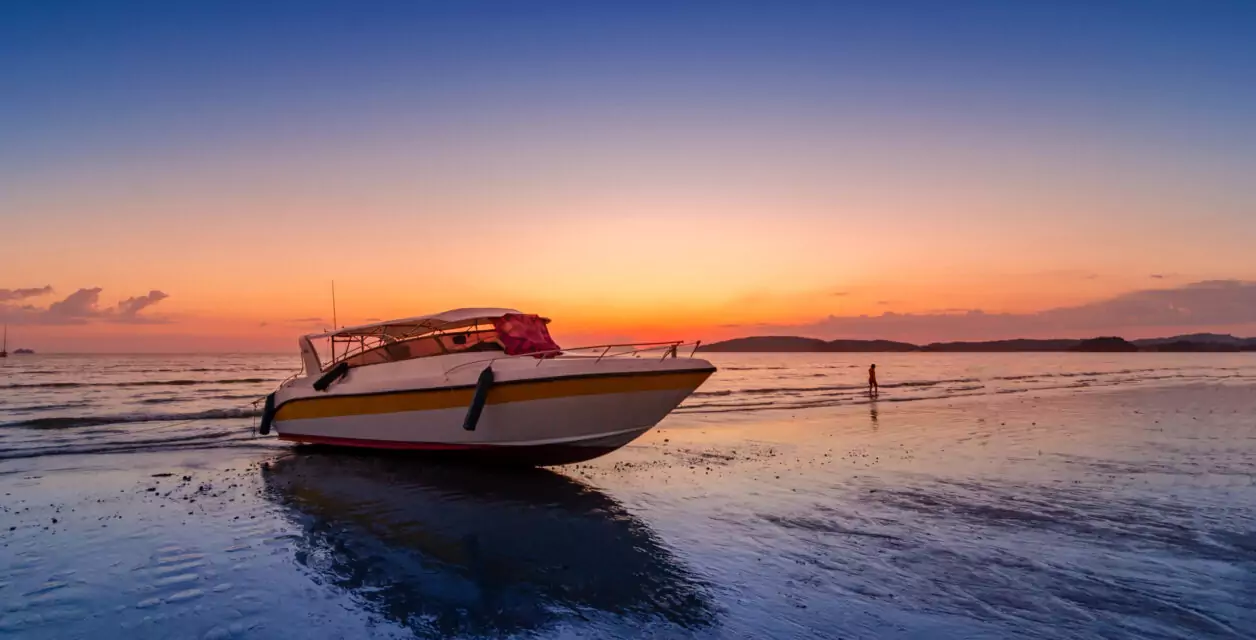Winter can sometimes approach so unexpectedly that you did not see that coming! What is worse is that if you did not take the time necessary to prepare your boat for storage, which is very crucial if you want it to serve you longer. In this guide, we will walk you through how to prepare your watersport equipment for the winter!
Who needs to winterize?
Suppose you are a watersport operator living in one of the northern U.S. states such as Michigan, Wisconsin, or Maine, who plan on taking time off during the winter waiting for the next season to come for resuming operations, then you stopped at the right place. Even if you live in sunny states like California, we still recommend you stick around, as these states also have many freeze-related insurance claims in the country. Yes, it is not an error, and you read this right that even supposedly sunny states like CA submit the freeze-related requests to their insurance providers because they do not take precautionary steps. To avoid this happening, follow these 5 simple steps on prepping your watercraft for winter storage:
#1: Engine
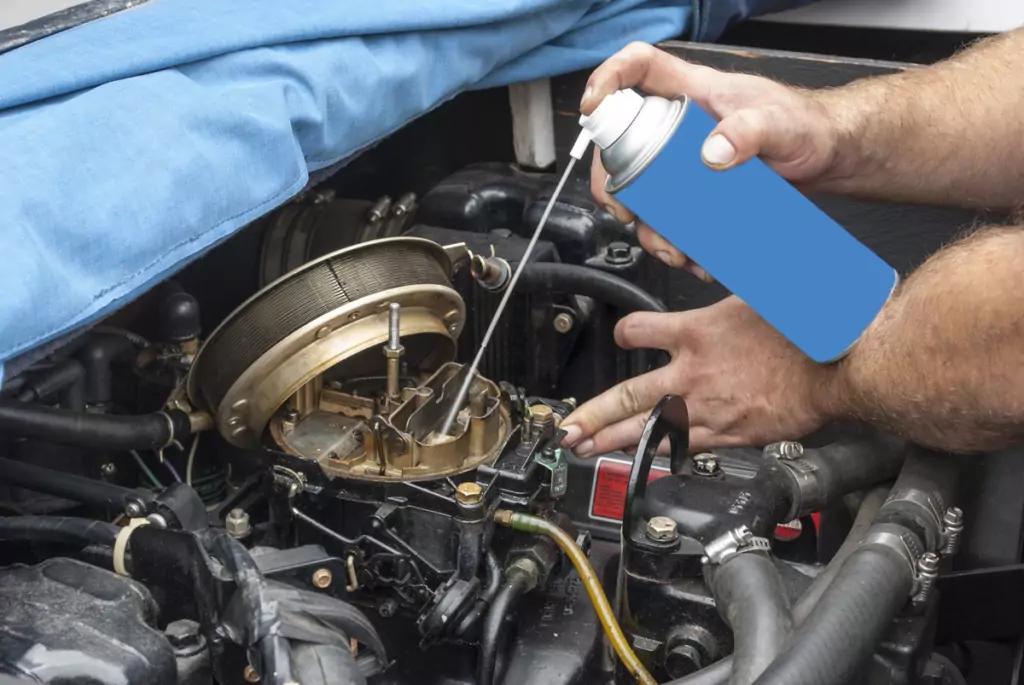
No matter what type of engine you may have, the following rules work equally fine across different types once you do a thorough cleaning of it. The steps outlined here prevent getting varnish, gum, rust, or, worse, corrosion.
We highly advise you first familiarize yourself with the manual coming with your boat and refrain from motor-related tasks if you do not feel comfortable. Instead, you could ask a boat mechanic to help you out with that; however, if you feel like you can do it, here are the essentials:
Fill the Tank with Gas
Filling the tank with gas decreases the chance of getting air into the tank. Air is bad for the tank because it causes moisture and even condensation if it is below freezing outside! To that end, our thought is that you need to fill the tank with gas; otherwise, you may end up with water inside, which can damage your engine severely, which you do not want to happen.
Change the Oil
Now it is a perfect time than ever to ensure this happens! Old oil in stored boat’s crankcase may cause acid formations influencing corrosion to appear. For that reason, we recommend you to take a look at available options for oil. Typically, you will see mineral-based and synthetic oils, refer yourself to the manufacturer’s instructions and see which one would work best for you. After all that, make sure that your oil filter is not leaking before proceeding.
Add the Antifreeze
Antifreeze helps prevent any residual water (e.g., condensation) from freezing. Not adding antifreeze can eventually cause cracking your block, which you do not want to happen. We recommend you to avoid the one based on ethylene if you want to go green by not releasing toxins into the water.
Fog the Engine
The use of fogging oil prevents corrosion of both outboard and inboard motors stored for an extended time. Check the manual and see if you have a closed cooling system. If you don’t, you need to make sure there is water available to run through your motor before putting your boat away and calling it a season. What you are trying to do is to distribute the fogger completely throughout the engine for effect to take place.
Remove the Battery
Make sure that the battery is the very last thing you remove before putting your boat away. It is crucial to store the battery in a warm, dry place, preferably somewhat close to an electrical outlet, so that you have an easy way to charge it about once a month. It is not recommended to store it next to concrete as they will lose charge and damage plates.
#2: Fresh and Waste Water Systems
You want to make sure that there is no water left anywhere within your boat. Ironically enough, this is the most dangerous thing your boat can experience. It can lead to acid formations, mold, mildew, etc., which can significantly damage your engine. For that reason, make sure to drain all the water, so there is no freeze expansion.
Looking after wastewater systems is undoubtedly a no fun task. Still, it is necessary for prolonging your boat’s life, and, what is even more important, to even comply with law requirements in some ways.
The main concern associated with sewage is nutrients and bacteria. The former can influence algal blooms, whereas the latter can make swimming and boating unsafe, damage marine life, and block waterways.
Fortunately, there are plenty of options for on-board sewage management, including toilets, holding tanks, and even onboard treatment devices. What matters, in this case, is the size of your boat, the kind of boating you do, as well as the nearest availability of pump-out stations. It is also essential to know if you operate a boat in No Discharge Zones when selecting the option that will best suit your needs.
Here is your checklist of other things you need to make sure is in your protocol for best results whenever someone is utilizing the boat for smoothing the waste-treatment process:
- Make a part of your routine habit to maintain your Marine Sanitation Devices (MSD) and the plumbing attached and install the best hose you can afford to reduce smells.
- Encourage guests to leverage the advantage of the onshore restrooms before they take off.
- Keep sewage out of all coastal and inland waters untreated.
#3: Cabin and Interior
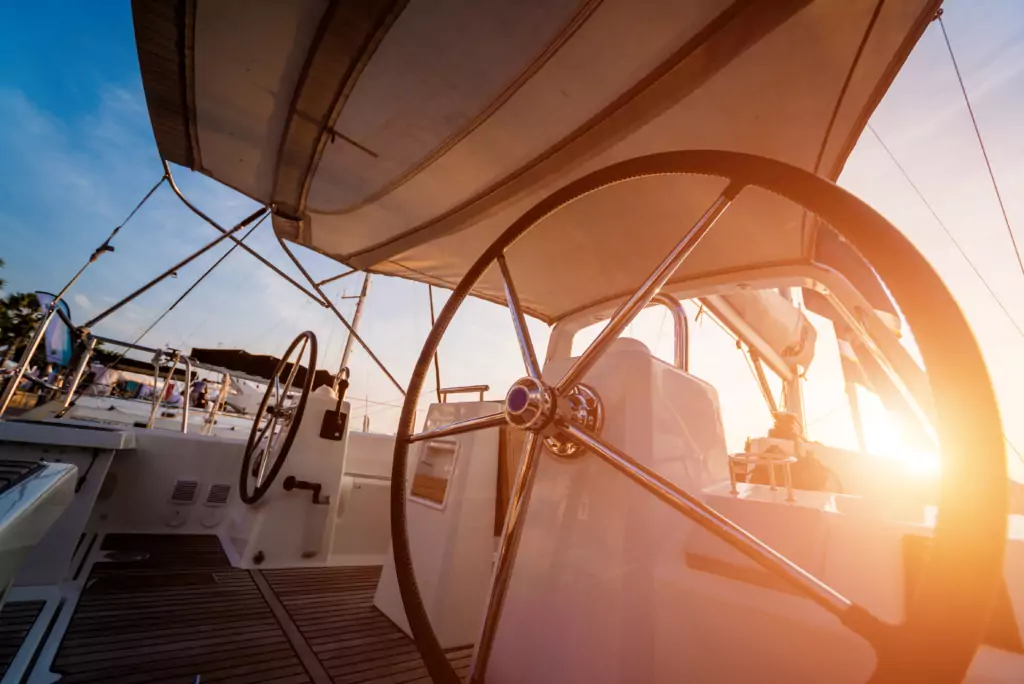
A boat cabin interior is another spot within your boat that can get damp if you are negligent about it. This could happen from winter condensation, which would cause moldy and musty substances. To make sure it does not happen, all you have to do is remove the items causing these problems. The items could be clothes, pillows, bedding, etc.
Next, what you want to do is see if you have any items containing liquid. If you do, then just take it home with you or trash it. The same goes for any electronics you may have, such as chargers and fridges. The latter also needs to be thoroughly cleaned, as well as defrosted before you go. That way, you will get good air circulation and make your boat less appealing to thieves.
#4: Cleaning
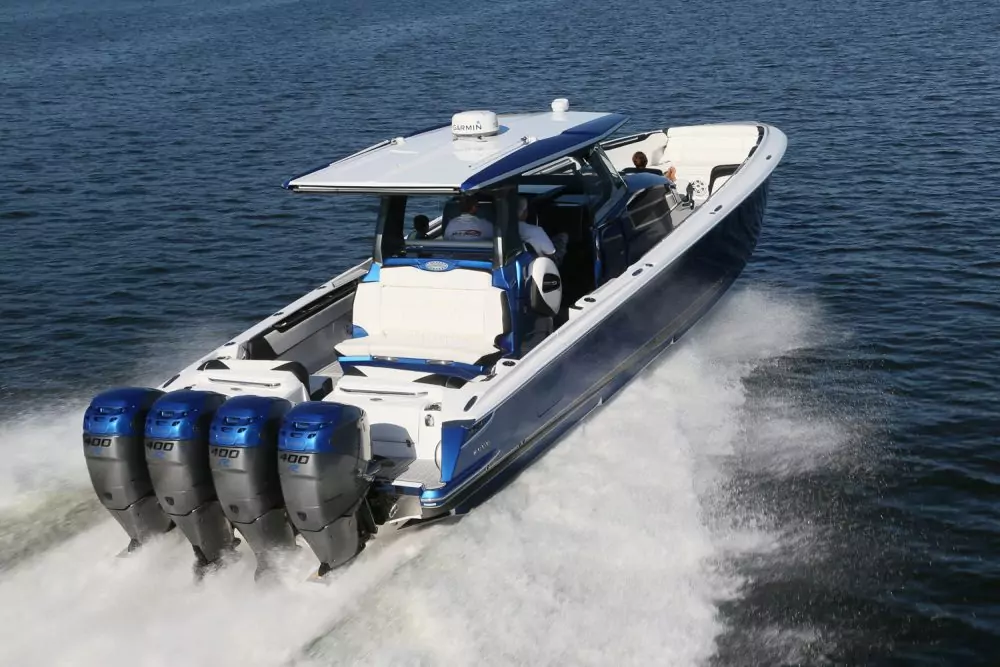
Now that you have cleared out all the interior, as well as taken care of your engine, it is time to give your boat a superior and extra careful cleaning!
For best results, we recommend that you do the procedure in the following order:
- Start from inside out – the cabin, heads, saloon, and make your way out.
- Scrub topsides – finish off by cleaning drawers, lockers, etc.
- Dry out your cleaning thoroughly so that no condensation gets formed or whatsoever.
- Repair blisterings if you notice any as you go through.
- Finish off with a coat of wax applied onto both the superstructure and hull for polishing evenly afterward.
If you do this now versus right before relaunching for the season, trust us, you will thank us for recommending this to you that way.
#5: Winter Location Selection and Covering
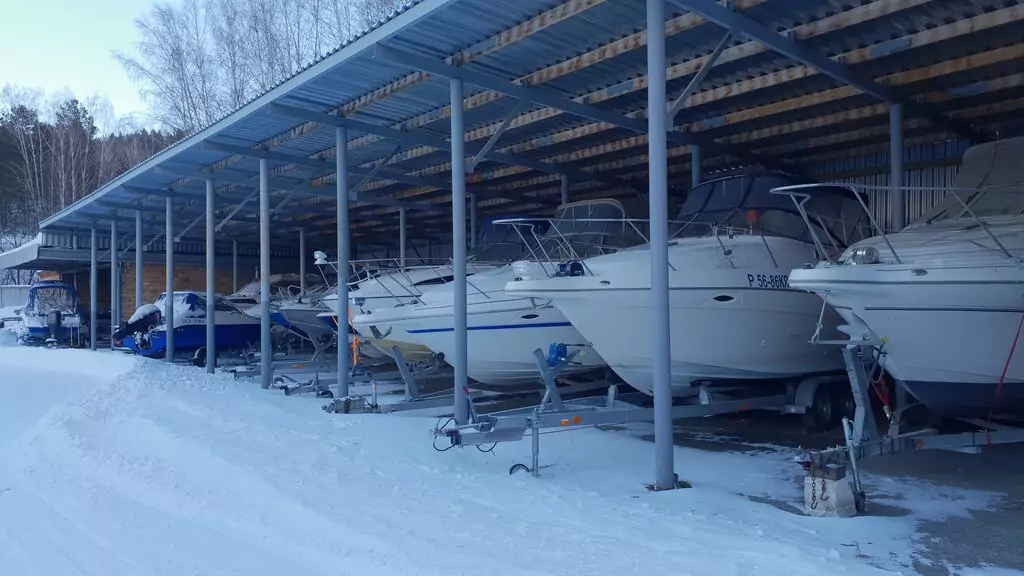
Congratulations on making it to the final step, which is just about giving the final touches before saying goodbye to your boat until the spring season! For this step, you need to decide where you want to keep your boat – would it be on the water or at some dry place? Would it be better to store it inside or outside? Down below is the table that compares the pros and cons for all…
| Winterizing Boat Outdoors | |
| Pros | Cons |
| Easier access for maintenance work if needed. | You will need to monitor for critters that can identify your boat as their home. |
| No storage fees if you want to store it at home. | You will need to watch out for snow and remove it as it covers the boat. |
| You will need to make sure that no ice gets formed if you do not want it to melt and produce water. | |
| Easier to keep an eye out for your boat. | It makes you bot more vulnerable to thieves. |
| Some regions do not allow you to park your boat on driveways. | |
| Winterizing Boat Indoors | |
| Pros | Cons |
| There is no need to worry about freezing, water cracking, and no need to cover the boat or shrink-wrap. | Less accessible if needed for whatever reason. |
| If it is a storage facility, it should not be difficult to find one close to you. | Enclosed storage units for vehicles can be more expensive than other options. |
| Reduced amount of needs for routine maintenance, | Some units may be too small in terms of height and length for your boat and trailer. |
| Facilities often have adequate security equipped with cameras making it less appealing to thieves. | |
| Winterizing Boat on the Water | |
| Pros | Cons |
| It will remove the burden for you to move it out of your marina because you can just leave it there. | You will need to monitor for critters that can identify your boat as their home. |
| Ready to use as you come back from winter break. | You will need to watch out for snow and remove it as it covers the boat, the same with ice that gets formed if you do not want it to melt and produce water. |
| You will likely pay less to the marina management than to the storage facility for keeping your boat. | Maintenance is more challenging to perform, as it’s almost impossible to inspect, repaint, repair or replace any areas below the waterline, such as the hull and any fittings. |
| Marinas often have adequate security equipped with cameras making it less appealing to thieves. | Regular inspection: Water must be removed immediately as it gets in before it can freeze and cause damage or lead to mold issues. |
No matter what option you select, you will likely still get something to cover your boat with, which is especially encouraged if you choose to winterize it outside or on water.
The covered boats are less likely to get exposed to stress cracks and will likely to stay drier, and brightwork finishes with fiberglass will also last longer.
Another benefit of covering your boat includes preventing premature leaks and prohibiting the fittings’ and joints’ deteriorations.
Bonus tip: if you want to take even an extra step in protecting your boat over a winter course, consider investing in shrink-wrap or an internal bracing system.
Why bother to winterize?
We hope you found this guide helpful and that we could convince you that winterizing a boat is a must. A boat should be treated like your own baby if you want it to serve you longer. Ultimately, it is your decision that should be based on rational judgment. We just want you to invest in opportunities to come instead of the new equipment caused by the damages brought by the winter.
Do you also own a jet ski and/or WaveRunner and want to learn more about its maintenance? You may find this guide helpful then! Or, if it does not start, then familiarize yourself with this guide.
